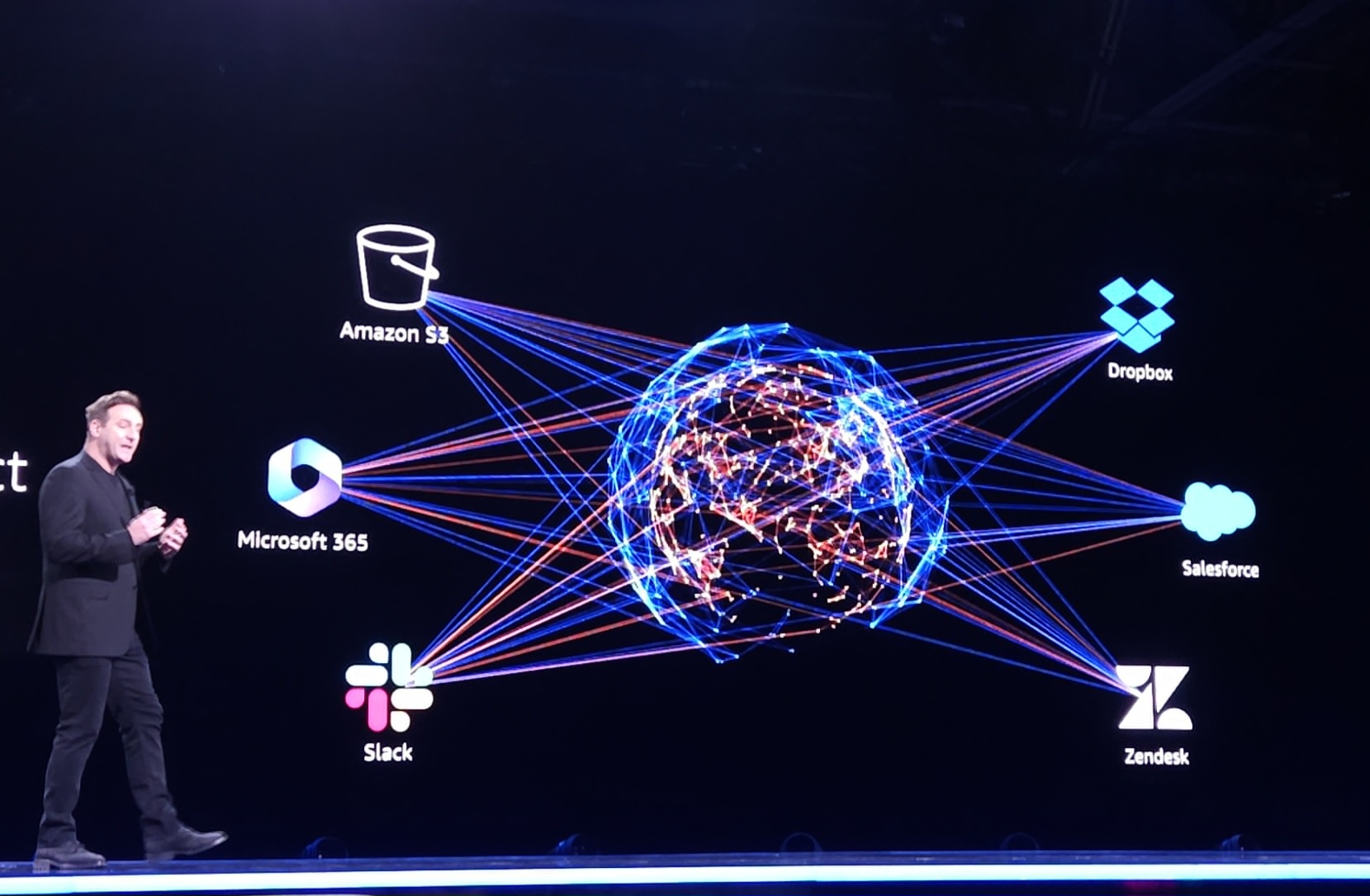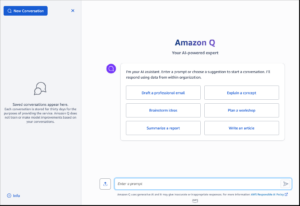
Amazon Launches AI Assistant, Amazon Q

AWS VP of AI Matt Woods discusses Amazon Q at re:Invent 2023
AWS today launched Amazon Q, an AI assistant designed to help customers automate a range of tasks, using their own data as the guide. Amazon Q also is being added to a range of AWS products, including Connect, CodeCatalyst, and QuickSight, but customers can also use it on its own.
OpenAI’s launch of ChatGPT during the last week of November 2022 spurred intense interest in large language models (LLMs) and generative AI. While the technology existed previously, ChatGPT’s launch opened up new pathways for adoption.
AWS, to its credit, has for the past two years been offering a natural language interface to QuickSight, its business intelligence offering. QuickSight Q, which was launched in September 2021, allowed customers to ask questions of their data in plain English.
With the launch of Amazon Q today during the company’s re:Invent 2023 conference, AWS is borrowing the name as well as some of the technology behind QuickSight Q. But it’s clearly expanding the offering beyond its BI roots, as it adopts new foundation models that AWS develops and supports as part of Amazon Bedrock.
As a general purpose AI assistant, Amazon Q will allow customers to accomplish a range of tasks, according to AWS’s Antje Barth, a principal developer advocate for GenAI at AWS.
“You can use Amazon Q to have conversations, solve problems, generate content, gain insights, and take action by connecting to your company’s information repositories, code, data, and enterprise systems,” Barth wrote in a blog post on Amazon Q.
For instance, a sales manager could use Amazon Q to write an email based on internal company data, or a marketing manager could ask Amazon Q to generate a blog post based on internal style guides. When it generates content, Amazon Q tells the user which specific documents were used to generate the content.
Amazon Q features pre-build connectors to 40 different systems, enabling it to learn from data customers have housed in applications like Slack, Salesforce, Microsoft 365, and others. “Q knows who you are,” AWS VP of AI Matt Wood said in the keynote today.
AWS is also releasing a preview of Amazon Q for CodeCatalyst, where it can be used to help with development tasks in AWS. When it’s exposed to a customer’s existing applications, it can understand the code and even provide personalized recommendations for how to build new apps in AWS based on the existing stack and the user’s role.
“Developers can go from an idea in an issue to fully tested, merge-ready, running code with only natural language inputs, in just a few clicks,” writes Irshad Buchh, a principal solutions advisor in a blog post. “AI does the heavy lifting of converting the human prompt to an actionable plan, summarizing source code repositories, generating code, unit tests, and workflows, and summarizing any changes in a pull request which is assigned back to the developer.”
A related offering is Amazon Q Code Transformation, which leverages the power of GenAI to write computer code. The offering, which is currently in preview, currently supports Java, and will soon be adapted to support Microsoft .NET.
“Amazon Q Code Transformation automatically analyzes the existing code, generates a transformation plan, and completes the transformation tasks suggested by the plan,” says Danilo Poccia, AWS’s chief evangelist for EMEA. “While doing so, it identifies and updates package dependencies and refactors deprecated and inefficient code components, switching to new language frameworks and incorporating security best practices. Once complete, you can review the transformed code, complete with build and test results, before accepting the changes.”
AWS used Amazon Q to upgrade 1,000 Java apps from Java 8 to Java 17. The whole project took just two days. “That’s months, if not years, of developer time saved,” AWS CEO Adam Selipsky said during his keynote today.
Amazon Connect, the company’s hosted contact center application, is also getting the Amazon Q treatment. The company is leveraging foundation models available in Amazon Bedrock to give an AI assist to several call center functions, including post-call summarization and better “slot” resolution (such as scheduling a service engagement for a certain time).
Customers could already create chatbots and interactive voice response (IVR) applications with Amazon Connect. With Amazon Bedrock’s foundation models, creating unified customer profiles has been enhanced, AWS Senior Developer Advocate Veliswa Boya writes in a blog post.
Amazon QuickSight, meanwhile, also gains new GenAI capabilities that will improve access to information for both end users and dashboard authors. With the foundation models available in Amazon Bedrock, AWS is now generating written stories and executive summaries based on information surfaced with QuickSight. You can read more about that here.
Related Items:
Five AWS Predictions as re:Invent 2023 Kicks Off
AWS Bolsters Glue ETL Tool with Data Observability, Ray Support



























